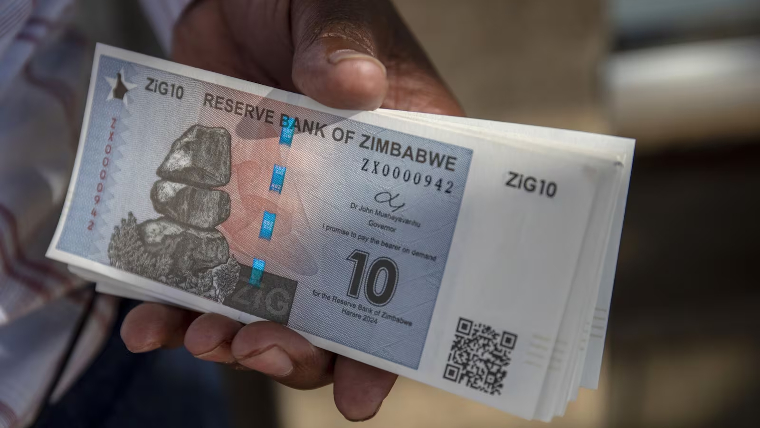Legat says the ZiG held steady at around ZWG24:USD1 for a while as a consequence of the tight liquidity but, at the mid-term Monetary Policy Review (MPR) presented at the end of August, it was announced that the untradeable Non-Negotiable Certificates of Deposit (NNCDs) held by the private sector would be converted into tradeable Treasury bills.
“These NNCDs were unilaterally issued to the private sector at the time of the ZiG’s introduction that effectively converted all the monies that were owed by the government/RBZ from the auction or the 25% export retention to the private sector into one or two-year NNCDs.
“Effectively these funds were blocked for those periods. The MPS changed that through the issuance of ZWG Treasury bills instead. For a business then that was due, say USD100 000 from the auction, their NNCDs were converted into ZWG at the official exchange rate (ZWG13.7 at the time) and ZWG Treasury Bills were issued to that value.
“Equally for an exporter due ZWG1 million in return for its 25% export retention, those ZWG NNCDs were converted to ZWG Treasury bills. Once received, these Treasury Bills could then be sold, at a discount if needs be, to anyone who wanted them.
“So in effect, ZWG that had been locked away from the monetary system were freed up and looking for a home. The ZWG soon plunged again from ZWG24:USD1 to up to ZWG35:USD1 at one point.
“That of course made the official rate of ZWG13.7:USD1 untenable and so at the MPC meeting of 28th September the official rate was devalued to ZWG24.7 to USD1, interest
rates were raised and the statutory reserves of banks were increased to suck out any liquidity.
“The black market rate fell back to around ZWG32 to USD1. So the second lunge down
from ZWG24 to ZWG35 was not due to economic saboteurs but by the RBZ freeing up
what had been blocked ZWG funds that then entered the money markets.
“In monetary terms there was more ZWG in the market relative to US dollars than before and so the value of that ZWG fell. Basic economics.
“For those who received the new Treasury Bills but had failed to trade them in before the end of September, lost half their money. Sorry for that.
“The rate should stay steady at these levels for some weeks or even a month or two, until such time as more ZWG liquidity is released, perhaps by Government drawing down on its
overdraft. The overdraft is set in the RBZ Act and allows the central bank to lend to the
government an amount up to ‘…twenty per centum of the previous year’s ordinary
revenues of the State..’ .That would amount to about one billion US dollars so it is a big
number, especially when you consider that the so called reserves of gold and foreign currency backing the ZWG amounted to just USD375 million at the end of June.”
Legat says the insatiable appetite by the government (and politicians) to spend what they don’t have will continue to undermine the local currency.
“As we have written before in previous Notes,it has been Government’s – or the politicians’
– insatiable demand for money to satisfy its own needs that, since 2014, has exceeded its
receipts through tax revenues that lies at the root of the problem.
“By spending more than it receives, instead of running a cash budget as the GNU did from 2009 to 2013, excess expenditure undermines any currency.
“The RBZ can do its utmost to reign in liquidity but so long as the Government can borrow through the overdraft or issue local ZWG or ‘local’ USD Treasury Bills, the currency will be undermined. Simple.”
(389 VIEWS)


